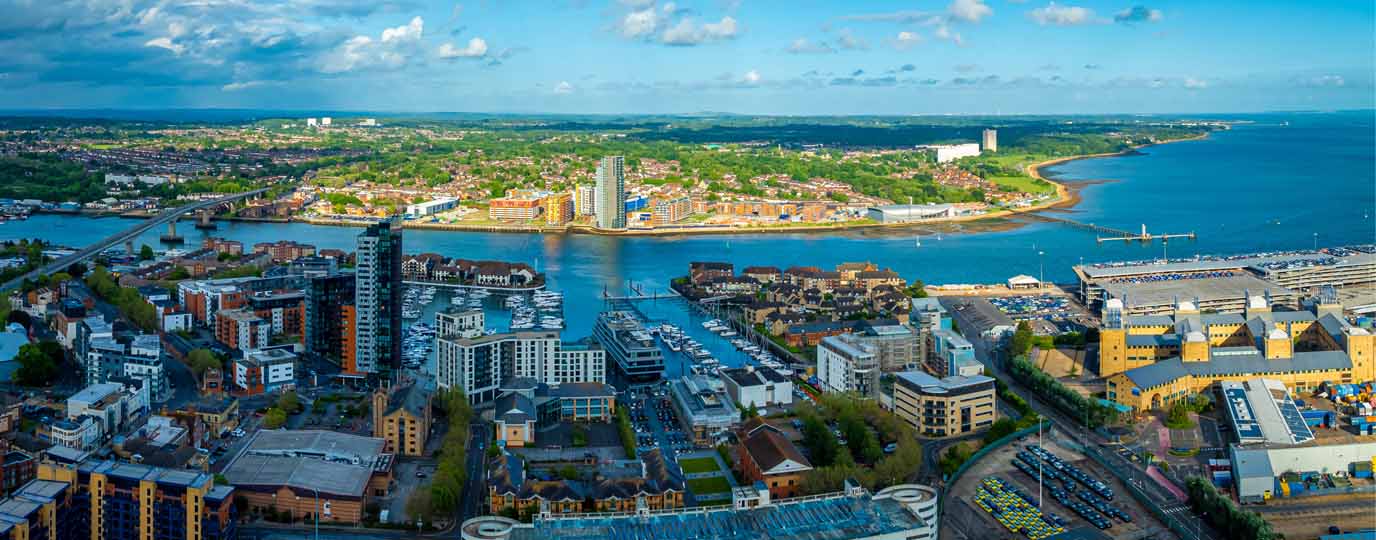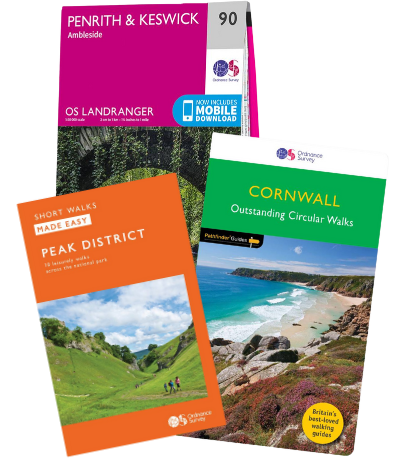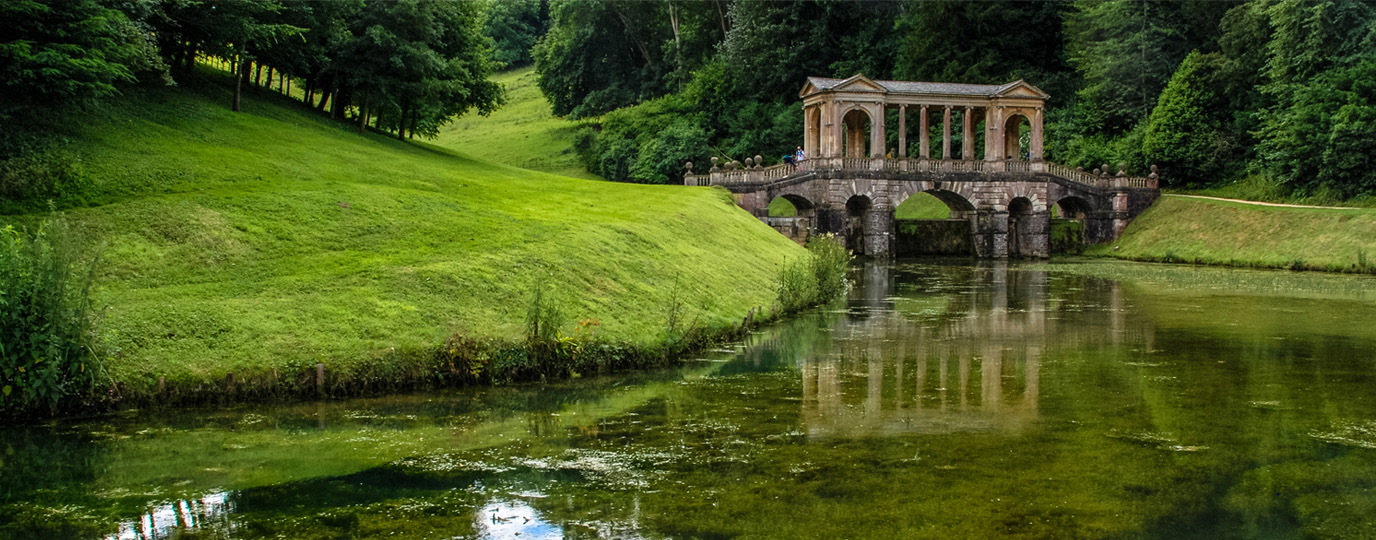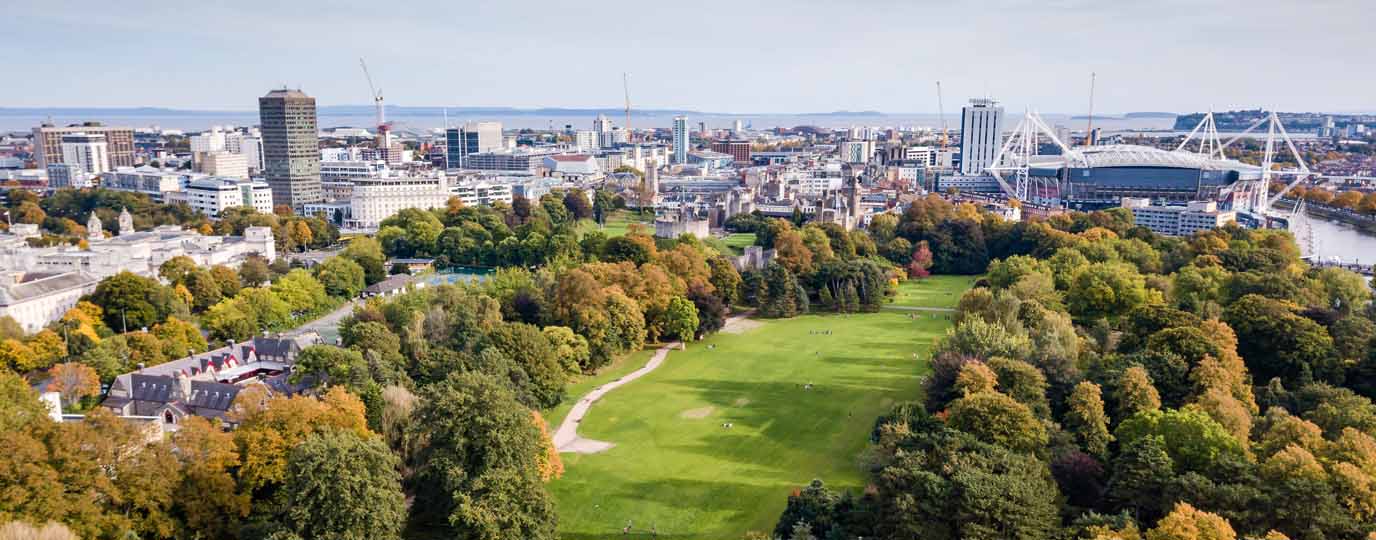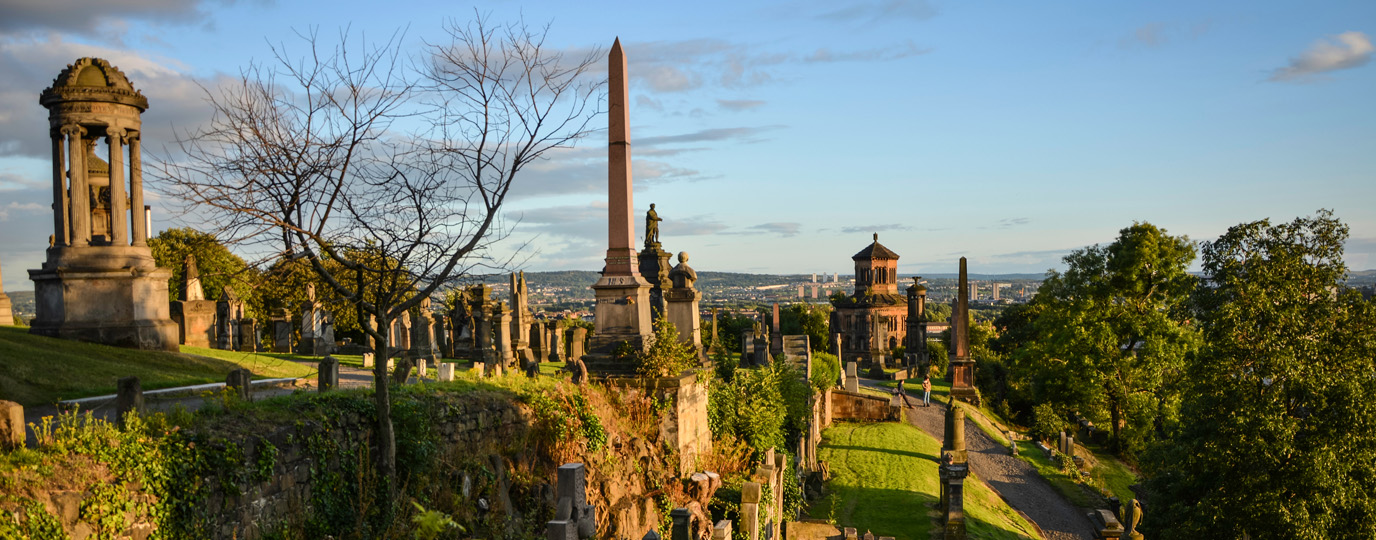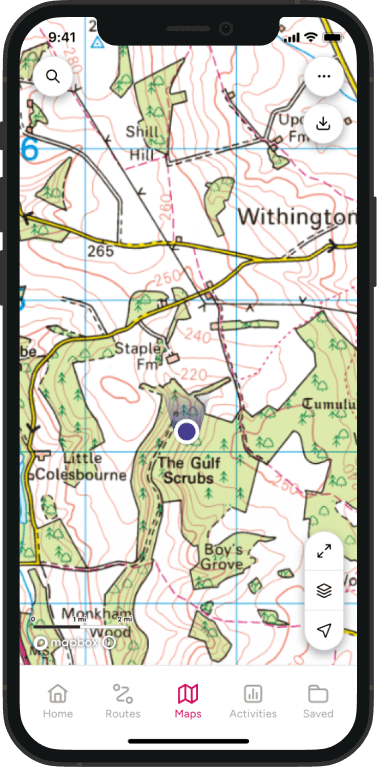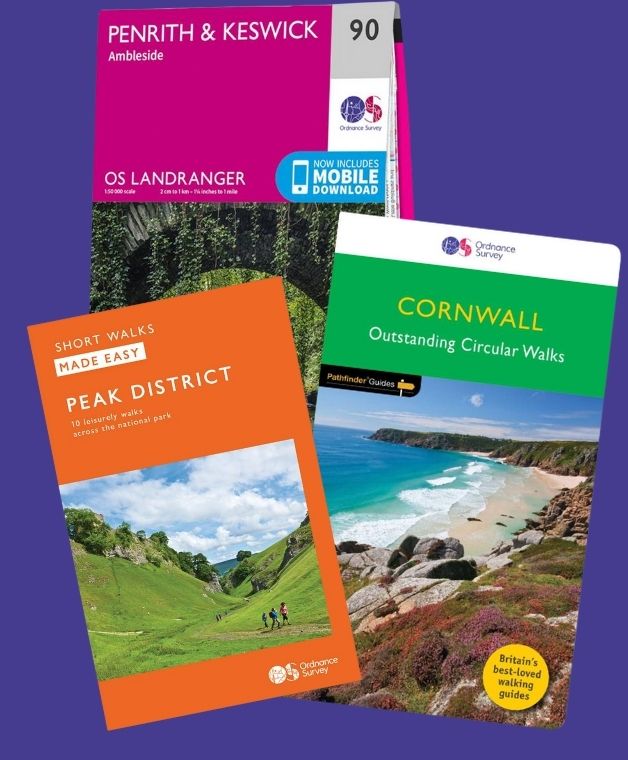Green Spaces and Scenic Walks in Southampton
Southampton is a city where modern life meets rich heritage, where both its centre and surrounds offer a wealth of opportunities for anyone who enjoys walking and connecting with nature. From historic waterfronts and medieval landmarks to tranquil parks and riverside paths, there are plenty of walking routes that combine natural beauty with glimpses of the city’s storied past.
All of the locations suggested in this guide are easily accessible by public transport, making them ideal for every schedule. Some provide a quick escape for a lunchtime stroll, while others invite you to spend a full day immersed in nature, only a short distance away from the hum of the city. Whether you’re exploring ancient woodlands, coastal views, or historic sites, walking in and around Southampton is a chance to slow down and breathe deeply.
If you’re unable to make it to Southampton, for similar walking ideas in and around cities near you, take a look at other locations in our city walks series. Below are a just few of the cities included in our series:
Where are the best city walks in Southampton?
Southampton Common

Nearest bus stop: Northlands Road (South East), Bassett Sainsburys (North West)
Nearest train station: Southampton Central or St Denys
Southampton Common is a vast green space in the heart of the city, covering over 300 acres and offering a welcome escape from the urban environment.
It dates to medieval times when it was used as common land for grazing livestock, and today it stands as one of the largest public parks in the region. The Common is not only a historic landmark but also a designated Site of Special Scientific Interest, thanks to its diverse habitats that include woodlands, ponds, and meadows. These features make it an important area for wildlife conservation and a haven for nature enthusiasts.
For those looking to enjoy the outdoors, the Common provides extensive opportunities for walking and exploring nature. Its network of paths winds through open grasslands and shaded woodland areas, creating a peaceful setting for a leisurely stroll or a brisk walk.
Adding to the experience is the Hawthorns Urban Wildlife Centre, located on the southeast corner of the Common. This centre serves as an educational hub, providing information about local wildlife and biodiversity. You can enjoy hands-on activities, seasonal events, and even a brass rubbing nature trail, making it a great stop for families and anyone curious about Southampton’s ecology.
Royal Victoria Country Park
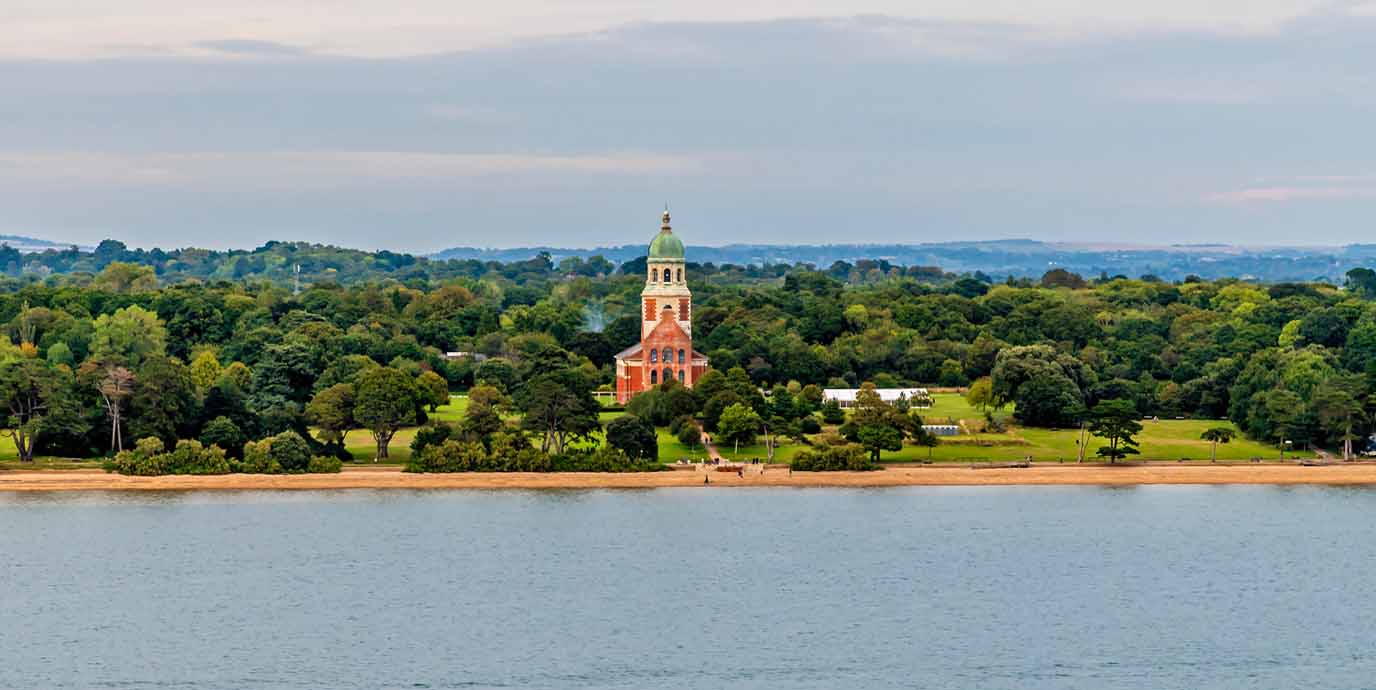
Nearest bus stop: Netley Station
Nearest train station: Netley
Set along the shores of Southampton Water, Royal Victoria Country Park offers a mix of coastal views, open parkland, and mature woodland, making it an ideal spot for anyone seeking fresh air and nature close to the city.
Covering around 200 acres, the area provides plenty of room for walking, whether you prefer a gentle stroll through grassy fields or a longer wander beneath tree canopies. The waterfront adds a scenic backdrop, with opportunities to enjoy the sea breeze and watch passing boats, while wildlife such as waterbirds and deer can often be spotted in quieter corners of the park.
Royal Victoria Country Park also carries a fascinating history. It occupies the former site of the Royal Victoria Military Hospital, once the largest of its kind when it opened in 1863 to treat soldiers from conflicts such as the Crimean War. Today, the only surviving building is the Victorian chapel, which serves as a heritage centre and includes a viewing tower offering panoramic vistas across the water. You can explore this historic landmark before continuing your walk, enjoying the blend of cultural heritage and natural beauty that makes the park a unique city-centre destination for relaxation and walking.
Testwood Lakes Nature Reserve
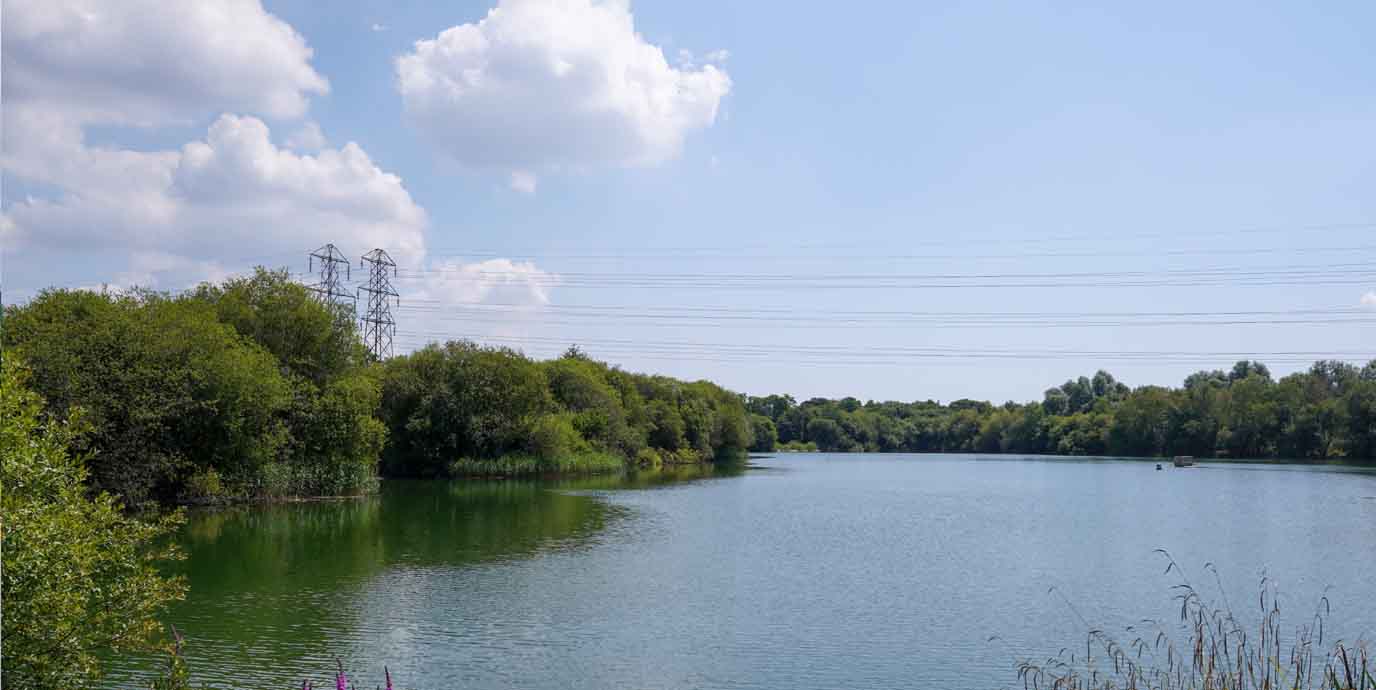
Nearest bus stop: Testwood Statium
Nearest train station: Totton
Nestled on the edge of Southampton near Totton, Testwood Lakes Nature Reserve offers a mix of open water, wetland, and woodland habitats, making it an inviting spot for a walk within Southampton’s city limits.
Created in the early 2000s as part of a water supply project, the area now consists of three lakes, Testwood Lake, Little Testwood Lake, and Meadow Lake, surrounded by 55 hectares of managed reserve. Despite its proximity to the M27, the setting feels far removed from urban life, providing a peaceful environment for walking and wildlife watching.
Walking opportunities here are varied and rewarding. Paths are mostly level and surfaced, but some areas can become muddy, especially in winter, so sturdy footwear is recommended. Along the way, visitors can enjoy bird hides overlooking the water, spot seasonal wildflowers, and observe an impressive range of wildlife from lapwings and oystercatchers to dragonflies and overwintering ducks.
Testwood Lakes Nature Reserve is adjacent to another reserve, Lower Test Nature Reserve, which can extend your walks through the area. The reserve connects to a section of the Test Way, a long-distance route following the River Test, and follows sections of boardwalks.
New Forest National Park

Nearest bus stop: Shopping Parade (Ashurst), Brockenhurst College (Brockenhurst), Lyndhurst (Lyndhurst)
Nearest train station: Ashurst, Brockenhurst or Beaulieu Road Station
Just a short journey from Southampton lies one of England’s most treasured landscapes, offering an incredible escape into nature without venturing far from the city.
Covering around 220 square miles, the New Forest National Park is a vast expanse of ancient woodland, open heath, and picturesque villages, providing endless opportunities for walking and outdoor exploration. Its history stretches back to 1079 when William the Conqueror designated it as a royal hunting ground, and today it remains a living landscape where free-roaming ponies, cattle, and deer add to its unique charm.
For those in Southampton, access is easy. Regular trains and buses connect the city to key points in the forest, including stations at Ashurst, Brockenhurst, and Beaulieu Road and buses to Lyndhurst. Once there, you can enjoy a variety of settings, from shaded woodland trails to open heathland and riverside paths.
The sheer size and diversity of the New Forest means there’s something for everyone. Whether you’re looking for a gentle stroll among ancient oaks, a longer hike across open heath, or simply a quiet spot to watch wildlife. Its proximity to Southampton makes it an ideal destination for a spontaneous day out, offering a refreshing contrast to city life and a chance to immerse yourself in one of Britain’s most iconic national parks.
Itchen Valley Country Park

Nearest bus stop: Romill Close
Nearest train station: Swaythling
Set at the edge of Southampton, Itchen Valley Country Park offers a peaceful retreat from the city, with 440 acres of water meadows, ancient woodland, and grazing land along the River Itchen.
Historically, the area was once a network of flood meadows and water channels used for agriculture, and remnants of the old Itchen Navigation canal, now a long distance walk, still run through parts of the park, reflecting its role in local trade during the 17th and 18th centuries. Today, it stands as a haven for wildlife and outdoor recreation, and has been recognised with multiple Green Flag Awards for its quality and conservation efforts.
For those seeking fresh air and nature, the park provides excellent walking opportunities across varied landscapes. You can explore surfaced paths through woodland and meadows, enjoy open fields for picnics, and spot wildlife such as dragonflies, butterflies, and numerous bird species in the wetland areas. The park’s size means there’s plenty of space for leisurely strolls or longer walks, and its natural diversity ensures changing scenery throughout the year.
Southampton Titanic Trail

Nearest bus stop: SeaCity Museum (Stop AM) (Start), Telephone House (Stop TE)(Finish)
Nearest train station: Southampton Central
For history lovers, walking through the city offers a unique way to explore Southampton’s deep connection to the RMS Titanic, a story that has shaped the city’s identity for over a century.
The the city is dotted with memorials and historic sites linked to the tragedy of April 1912, when the Titanic departed from Southampton on its ill-fated voyage. Hundreds of crew members were local, and the disaster left a lasting impact on the community. Today, these memorials dedicated to engineers, musicians, and crew stand as poignant reminders of the lives lost. Together they form the basis of a walking experience that blends history with the modern cityscape.
The local council provides a self-guided walk that connects these memorials and weaves through Southampton’s streets, allowing you to take in significant buildings and landmarks along the way. As you follow the route, you’ll also encounter features such as the Bargate, a medieval gateway that once marked the entrance to the old town, and sections of the historic city walls that date back to the 13th century, which can also be walked.
This trail provides you with an opportunity to admire Southampton’s architectural heritage, enjoy its public spaces, and experience the blend of old and new that defines the city. With its combination of cultural significance and urban scenery, the trail offers a reflective yet engaging way to see Southampton on foot.
Lakeside Country Park
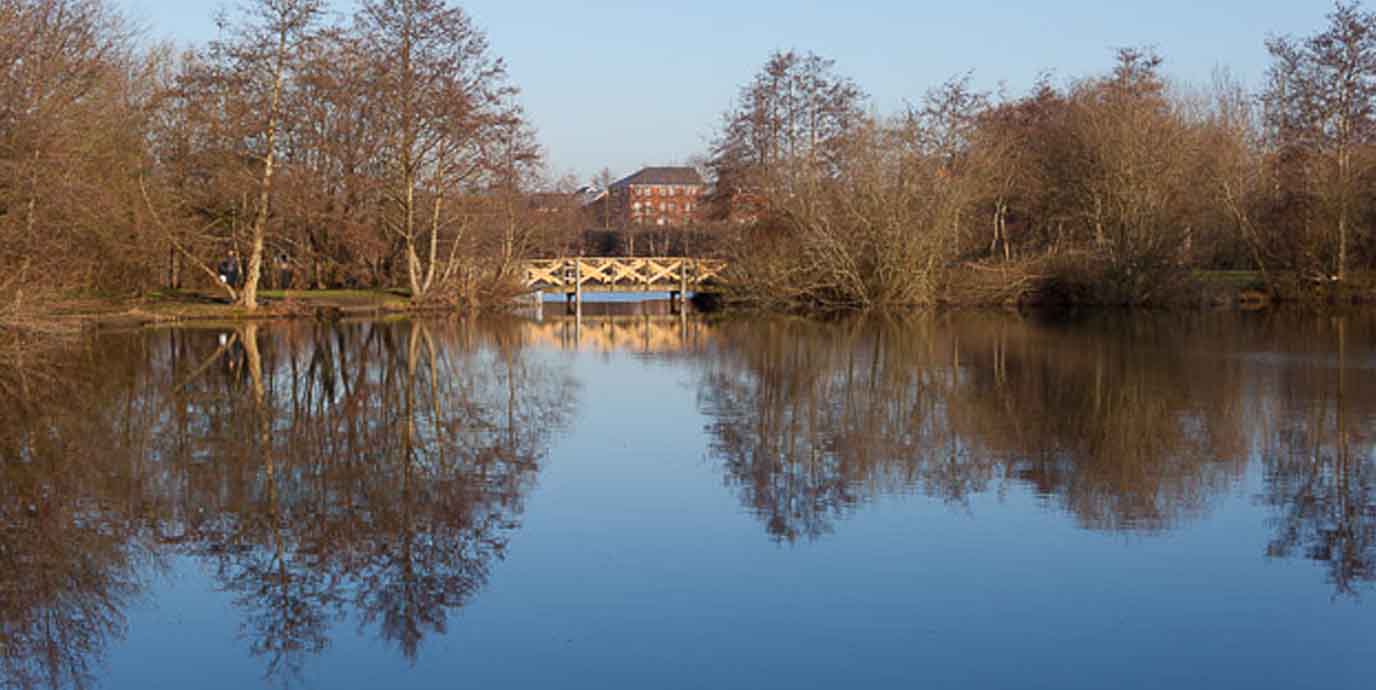
Nearest bus stop: Lakeside Country Park
Nearest train station: Southampton Airport Parkway
Just on the edge of Southampton near Eastleigh, Lakeside Country Park offers a peaceful setting for anyone looking to enjoy nature without traveling far.
Covering around 60 acres, the park was created from restored gravel workings and now features a mix of lakes, wet meadows, and young woodland. Its varied habitats support a wide range of wildlife, from birds and insects to foxes, deer, and even bats, making it a rewarding spot for those who enjoy observing nature.
Walking is one of the main draws here, with paths winding through open areas and around the lakes, providing plenty of opportunities for a gentle stroll or a longer wander. Visitors can pause at picnic sites, watch the miniature steam railway in action, or simply enjoy the tranquil views across the water. The park also offers fishing and seasonal activities, adding to its appeal for outdoor enthusiasts.
Riverside Park
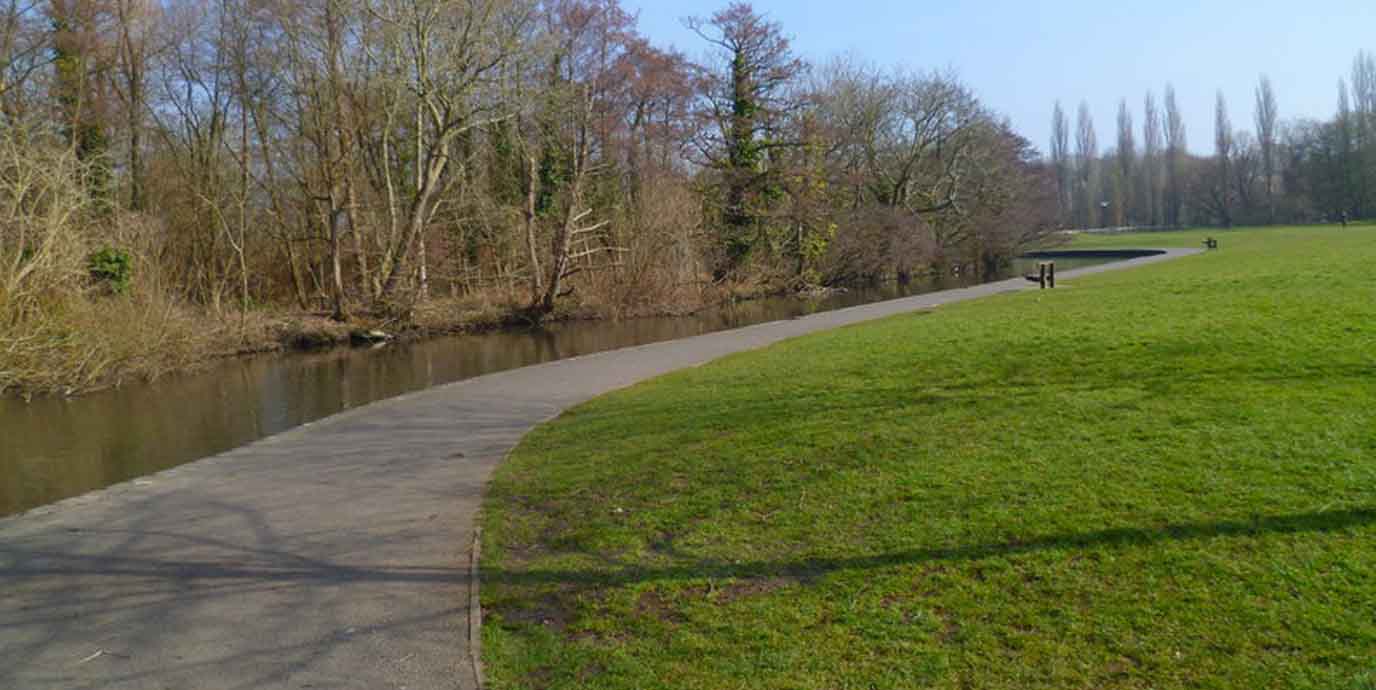
Nearest bus stop: River Walk
Nearest train station: Swaythling
Stretching along the banks of the River Itchen in Bitterne Park, Riverside Park offers a refreshing escape from the city while remaining close to Southampton’s urban heart.
Covering about 32 hectares, the park was developed in the mid-20th century on reclaimed land and has since become a popular destination for leisure and nature. Its riverside setting is particularly special. The Itchen is a chalk river of international ecological importance, supporting species such as salmon, water voles, kingfishers, and dragonflies. This combination of natural beauty and wildlife makes the area ideal for anyone seeking a peaceful walk with plenty to observe.
Flat, paved paths run the length of the park, making it accessible for all, and they follow the river through a mix of open grassland and tree-lined sections. Along the way, you can enjoy views across conservation areas, spot swans and ducks on the water, and pause at play areas or picnic spots. This blend of riverside tranquility and urban character makes Riverside Park and the River Walk a perfect choice for anyone looking to experience a walk a short distance from Southampton’s city centre.
River Hamble Country Park
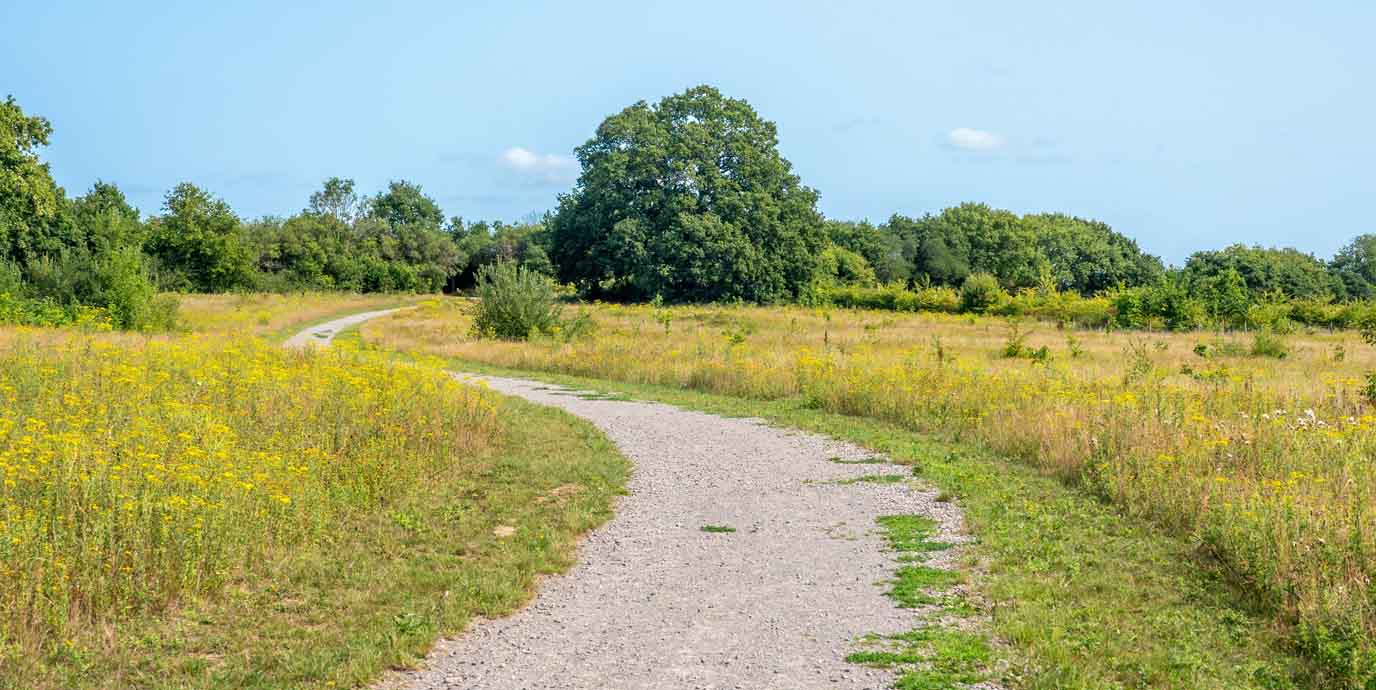
Nearest bus stop: Dodwell Lane (Hedge End)
Nearest train station: Bursledon (3.5 miles)
Set along the west bank of the River Hamble, River Hamble Country Park offers a mix of ancient woodland, riverside paths, and open spaces, creating a peaceful retreat just a bus ride from Southampton.
Covering around 356 acres, the park has a rich history dating back to medieval times, when the Grace Dieu, one of the largest ships of its era, was built for Henry V and later sank in the river after a lightning strike. During World War II, the site became HMS Cricket, a Royal Navy training base for D-Day landings, and remnants of this past can still be found within the park. Today, it is recognised as part of a Site of Special Scientific Interest for its diverse habitats and wildlife.
The park is ideal for a stroll, with paths winding through bluebell woods, meadows, and along the scenic shoreline of the Hamble. You can enjoy seasonal changes from vibrant wildflowers in spring to rich autumn colours, and spot wildlife such as curlews, skylarks, and roe deer.
The riverside setting adds extra charm, offering views across the water and opportunities to pause at picnic areas or explore historic features like the Manor Farm site. With its combination of natural beauty, heritage, and easy accessibility from Southampton, River Hamble Country Park is an ideal destination for anyone seeking a relaxing walk.
Weston Shore

Nearest bus stop: Foundry Court (West), New Road (East)
Nearest train station: Woolston (West), Netley (East)
Running along the eastern edge of Southampton beside the Solent, Weston Shore offers one of the city’s few remaining natural shorelines and a refreshing alternative to urban green spaces.
Historically, the area was used by fishing communities for centuries and later became an industrial hub during World War I, where factories produced brass for munitions. By the 1930s, Weston Shore was developed for leisure, and its distinctive Art Deco seating shelters, still visible today, reflect the era.
For walkers, the promenade provides a level, accessible route with uninterrupted views across the Solent, making it ideal for a relaxing stroll or a longer walk. The shingle beach and open grassland offer space for picnics and recreation, while the foreshore’s mudflats are a designated Site of Special Scientific Interest, attracting thousands of wading birds such as oystercatchers, curlews, and godwits at low tide.
You can enjoy watching cruise liners glide past, explore nearby woodland, or pause at the open-air café along the route. You’ll even pass close to Netley Abbey, the most complete surviving Cistercian monastery in southern England, founded in 1239 under the patronage of King Henry III.
With its combination of coastal scenery, wildlife, and historical character, Weston Shore is a perfect spot for anyone in Southampton seeking fresh air and a scenic walk by the water.
Where can you find more nature walks in Southampton?
Southampton and its surrounding area has plenty more walking opportunities if you’re looking for a break from the city. For inspiration a short bus or train ride away, consider a one of the following green spaces as an alternative:
- Mayflower Park – a city-centre waterfront green space offering views of cruise ships and a relaxing spot for a short walk by Southampton Water.
- Sholing Valleys Study Centre – a hidden nature reserve with ponds and woodland, perfect for a quiet walk and wildlife spotting.
- Emer Bog and Baddesley Common – a mix of heathland and wet bog habitats providing a peaceful, rural walking experience rich in biodiversity.
- Fishlake Meadows & Romsey Canal – a wetland haven near Romsey with reedbeds and open water, ideal for birdwatching and tranquil walks.
- Lord’s Wood – ancient woodland on the city’s edge offering shaded paths and a natural escape for walkers.
- Swanwick Lakes Nature Reserve – former clay pits transformed into lakes and woodland, great for wildlife walks and serene views.
- Holly Hill Woodland Park – ornamental gardens and wooded valleys near the Hamble, combining scenic beauty with easy walking routes.
- Hatch Grange – a historic parkland with open grass and mature trees, perfect for a gentle stroll and nature appreciation.
- Eling Waterfront – a picturesque tidal mill setting with views across Southampton Water, ideal for a short walk by the shore.
Do you want to go a little further than Southampton for a walk?
Beyond Southampton, the South East of England has many more outdoor opportunities for those seeking their next adventure. If you’re looking to step from a city stroll into a countryside hike, get ready for adventure and take a look at our suggestions of where to go:
- St Catherine’s Hill – a chalk downland nature reserve with sweeping views and rich wildlife, perfect for a scenic countryside walk.
- Solent Way – a 60-mile coastal walking route offering stunning sea vistas and varied landscapes along the Solent shoreline.
- Lepe Beach – a mix of shingle beach and coastal parkland with historic D-Day links, ideal for a refreshing seaside walk.
- Titchfield Haven National Nature Reserve – wetlands teeming with birdlife and tranquil paths for nature-focused walks.
- Hengistbury Head – a dramatic headland with heath, cliffs, and coastal views, combining history and wildlife on foot.
- Moors Valley Country Park & Forest – expansive woodland and lakes providing family-friendly trails and immersive nature walks.
- South Downs – rolling chalk hills and open countryside offering endless walking opportunities with panoramic vistas.
